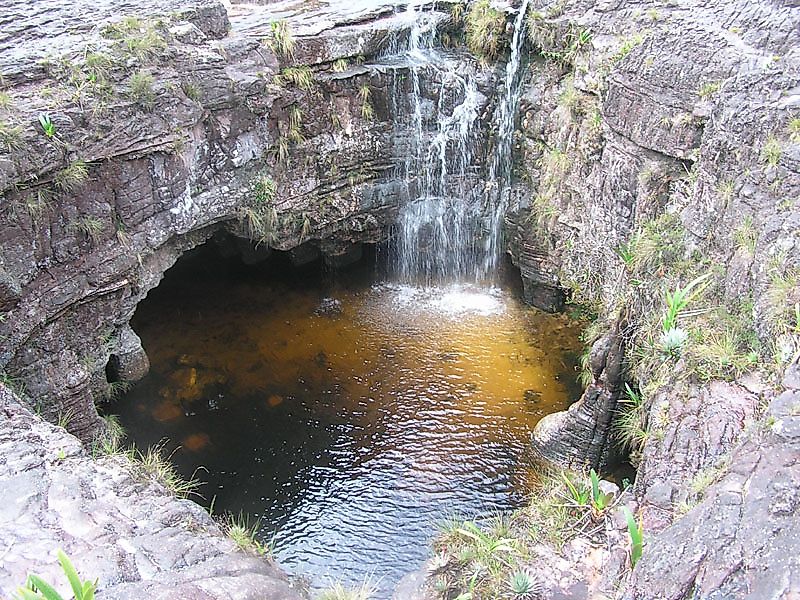The Sarisariñama Sinkholes, Venezuela - Unique Places around the World

5. Description
The Sarisariñama Sinkholes are located in Jaua-Sarisariñama National Park in Venezuela. These sinkholes are hundreds of miles from the nearest road and town or city. Sinkholes are usually located on top of flat mountains called tepuis with a height of 300 to 2,350 metres. The Sarisariñama mountain is covered by a lush forest 15 to 25 metres high. So far, only four sinkholes have been discovered in this mountaintop. The ones with names are Sima Humboldt, Sima Martel and Sima de la Lluvia. The best time to explore the sinkholes is in spring when nature is also at its best.
4. Tourism
Exploring sinkholes have never been that popular but with scientific expeditions and probably cavers. There has been quite a handful of explorations of these same sinkholes in the recent past but most ended up in disaster. Expeditions like these usually would entail some preparation and substantial funds to pay for the native Indian guides, porters and equipment. The location is itself roadless and quite dangerous. The explorer tourist needs mountaineering skills not to mention spelunking experience. The insistent average tourist should fly to Caracas, Venezuela as the jump off point for a more convenient helicopter ride to the sinkhole location.
3. Uniqueness
Sinkholes weren't known to the civilized world until 1961. Pilot Harry Gibson, was the person who spotted the two huge holes on this mountaintop. Inside, at the bottomof these sinkholes are also forests that have their own ecosystem that evolved separately with its own flora and fauna. From then on, several expeditions were mounted but not until 1974 did a helicopter land on the top to explore both sinkholes. From 1976 onwards, more expeditions went up the mountain to explore the sinkholes. Today, the government of Venezuela has put restrictions on explorations of these sinkholes, permitting only scientific expeditions.
2. Habitat
The Sarisariñama tepuis is one of the remotest mountains in South Central America. The four sinkholes on its top have different circumferences and heights. The biggest is called Sima Humboldt with a circumference of 1,155 ft. (352 m)wide and 1,030 ft. (314 m) deep. The other is Sima de la Lluvia with a height of 1.35 km. Sima Humboldt and Sima Martel have a forest ecosystem at their cave's bottoms. The flora found in these sinkholes are mostly orchids and bromeliads. They also have their own endemic collection of fauna which include frogs and new species unknown to science yet.
1. Threats
The tepuis is reachable only by helicopter but perseverance by canoe with a guide is not farfetched. The danger to humans from this place is their carelessness, besides of course, the exploration risks involved. Tourists should be aware of the height of the sinkholes before descending it. Risks from bug bites unknown to science should be considered as well. In short, preparation and caution saves lives. Not many expeditions are allowed nowadays to the tepui except if scientific in nature. This should help in the tepuis environmental conservation effort. Urbanization and climate change are two other threats to the tepui.











